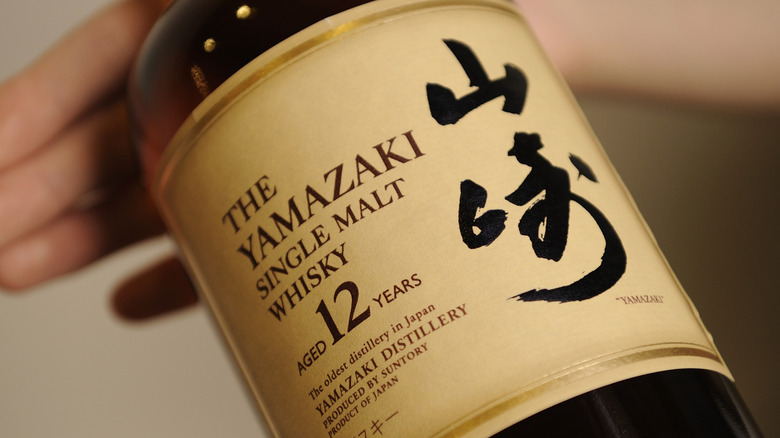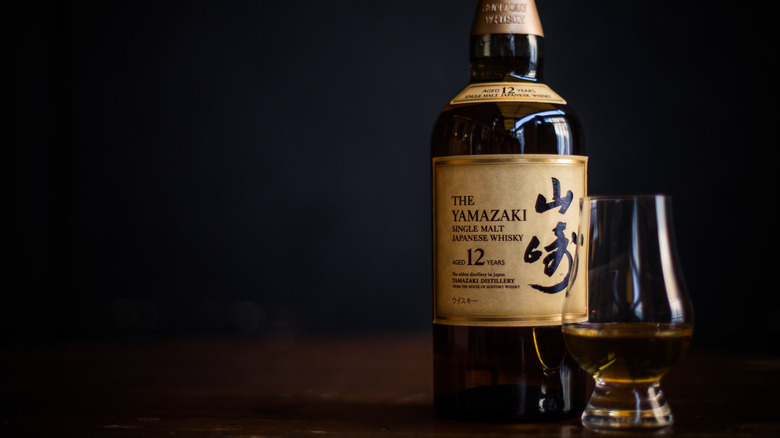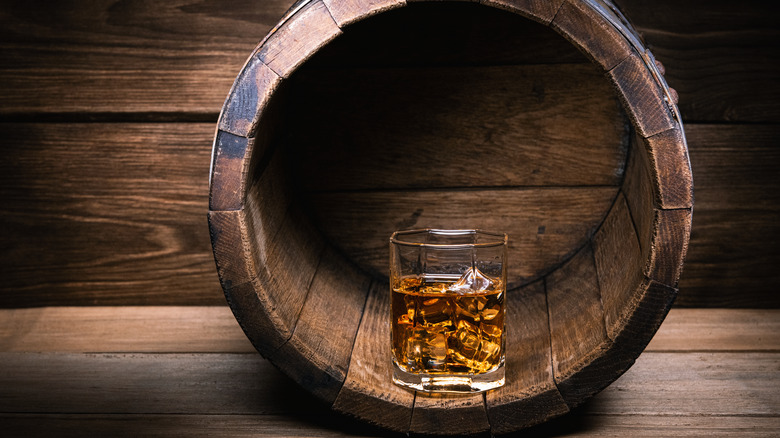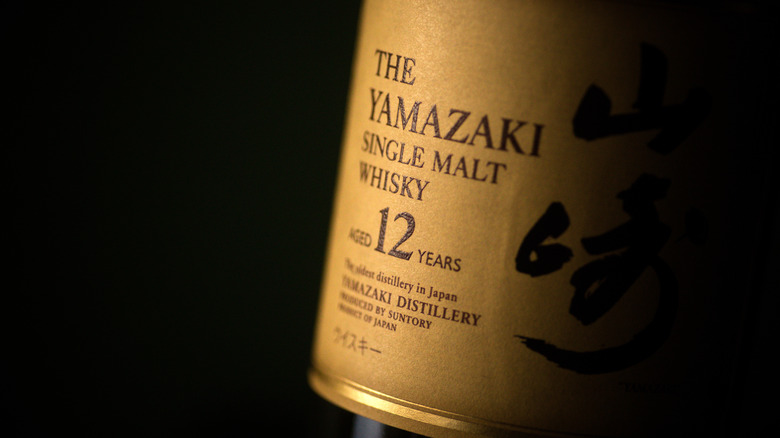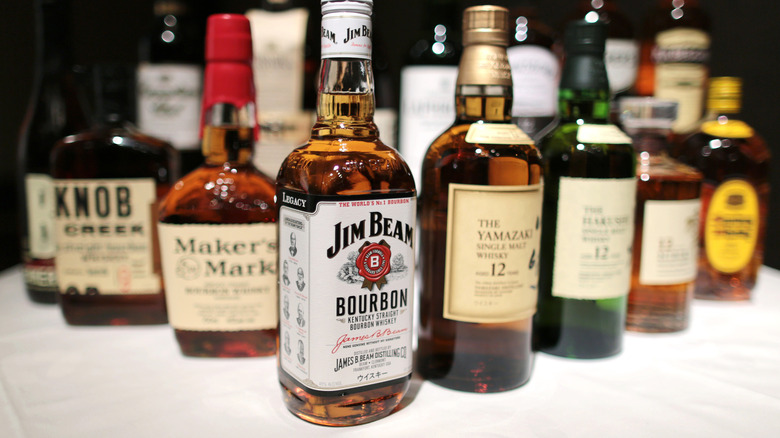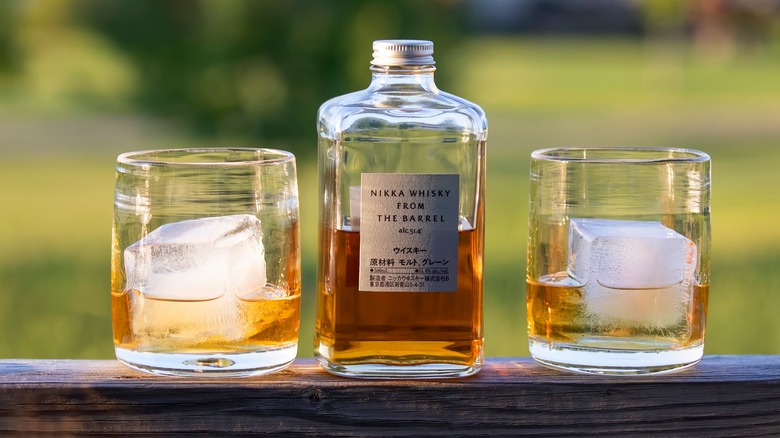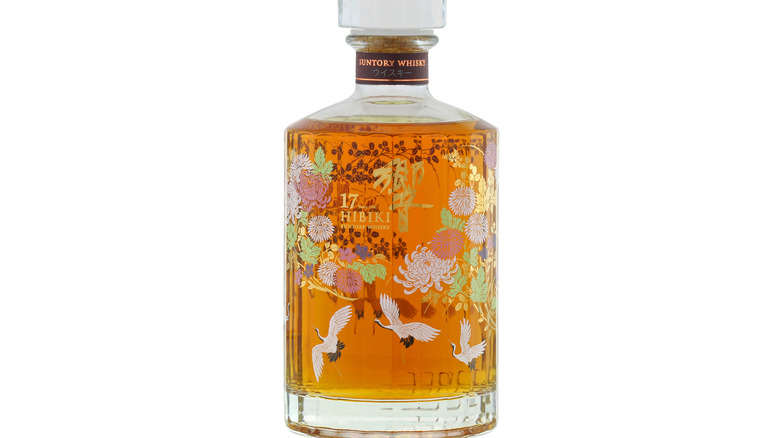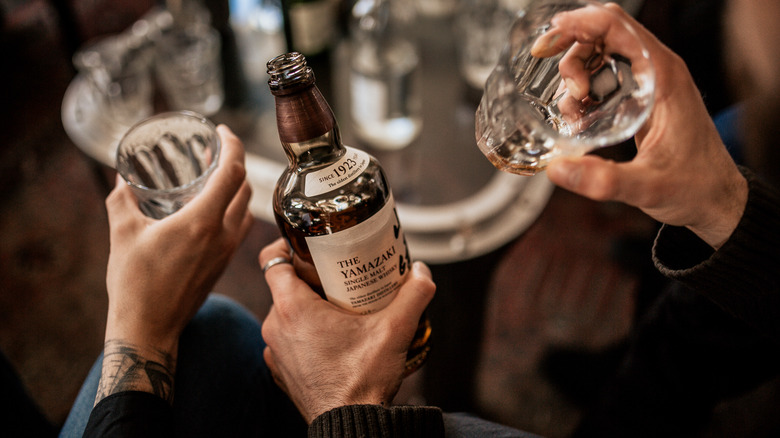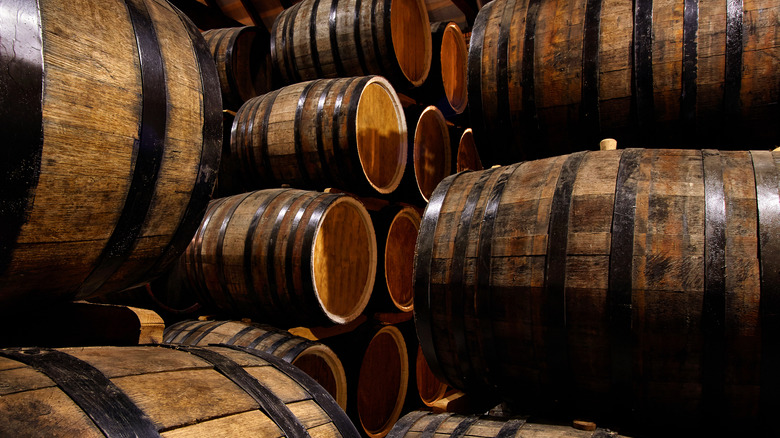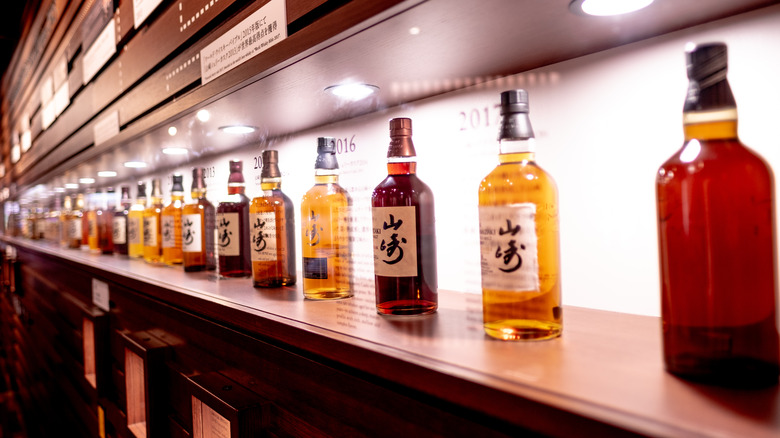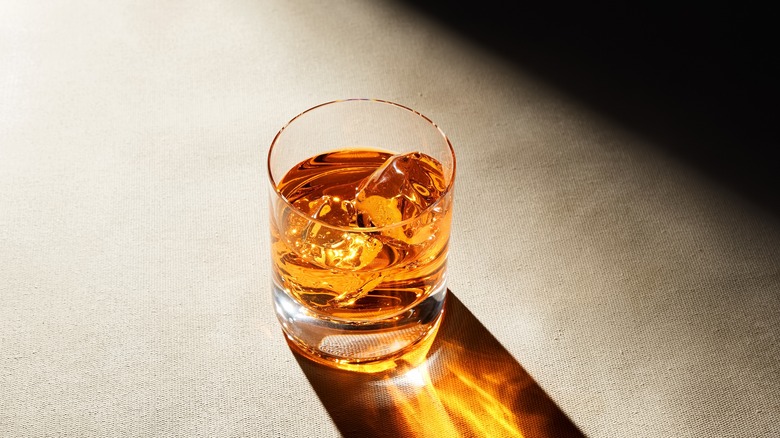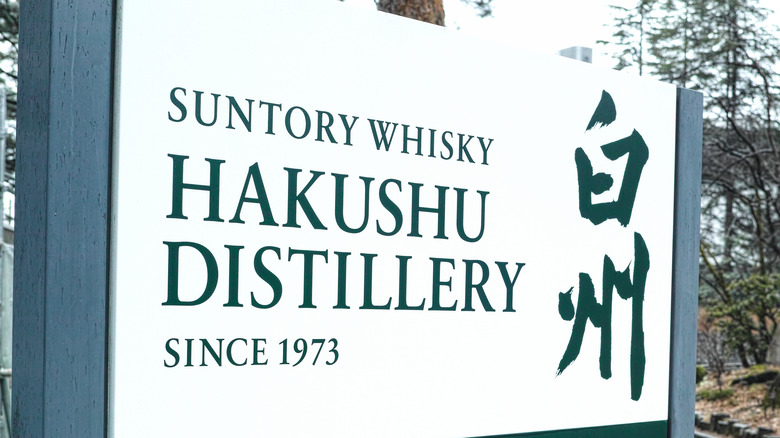Yamazaki 12 Year Whisky: The Ultimate Bottle Guide
Whisky aficionados know that some of the world's best whisky comes from Japan—and Yamazaki 12 Years Old Single Malt Whisky is no exception. The Yamazaki Distillery was the first of its kind in Japan, and since its inception in 1923, has become a symbol of first-class spirit production. Today, Yamazaki 12 Year —as well as the entire range of Yamazaki whisky (spelled without the "e" versus Irish or Scotch whisky) — is part of the larger House of Suntory family. With brands like Roku gin, Haku vodka, Hibiki blended whisky, and Suntory whisky Toki under its belt, the House of Suntory has helped pioneer the blossoming popularity of Japanese spirits across the globe.
Crafted from 100% barley, Yamazaki 12 Year Single Malt Whisky is sold in 35 different countries. With its delicate, intricate flavor, artisan production, and reputation for excellence, the flagship whisky is a well-respected bottle by critics, connoisseurs, and casual drinkers alike.
At 43% ABV, this bottle boasts balanced flavors that are simultaneously deep and rich while retaining Yamazaki's renown for nuanced and complex spirits. The production of Yamazaki 12 Year combines age-old techniques with modern innovation results in what is considered by many to be a high-caliber take on whiskey. With its average price tag per bottle sitting in the triple digits, this is one spirit that is meant to be savored.
The history of Yamazaki 12 Year Whisky proves it's a pioneer
Established by Suntory's founder Shinjiro Torii, the Yamazaki distillery is the first official producer of malt whisky in Japan. The brand claims its operations outside of Kyoto as the birthplace of Japanese whisky — at least to a global audience. Inspired by techniques established by its Scottish whisky counterpart, the brand sought to apply distinct Japanese tasting notes to Scotch by taking advantage of a terroir and climate that differs radically from what's found in Scotland, and was able to produce a category of spirits completely its own.
Yamazaki 12 Year was originally released in 1984. Whiskey Geeks finds, at the time, consumers were primarily interested in blended whiskies, rather than single malt varietals. Despite going against the grain (pun intended), Yamazaki's quality led it being well-received by the market and, consequently, spurred a new era in Japanese whisky consumption.
The distillery and namesake bottles take their moniker from the suburban town of Yamazaki (where the distillery resides), which is located outside of Osaka, and serves as a hub between Osaka and Kyoto. The town's location is said to act as a prime setting for Yamazaki's whisky production due to its four distinct seasons and the perpetual mist that arises from where several rivers converge.
Single malt might not mean what you think
It might seem like common sense would dictate that the term "single malt whisky" refers to a product that comes from a singular barrel. However, as perplexing as it may seem, that isn't actually the case. Rather, Dekanta explains if a whisky is labeled as a "single malt," it means that it's made from 100% malted grain and comes from a single distillery. Single malt is a type of whiskey where each individual bottle can come from multiple barrels, as long as those barrels don't come from an outside distillery.
In the case of Yamazaki's whisky, the different barrels used to blend the final products play a major role in the overall quality of the spirit. The Yamazaki distillery uses five different types of oak barrels in various shapes and sizes to impart distinct flavors into the malt. Its cask selection includes barrels made from American Oak, Japanese Oak, and Spanish Oak, and each type of wood matures the whisky differently. Blending each barrel results in the complexity in the final bottle.
There are a plethora of guidelines and regulations in place in Japan that dictate rules of production and labeling, and the Japanese government has actually tightened whisky production rules in recent years. Even the difference between spelling the spirit whiskey or whisky matters!
12 Year is the winner of numerous whisky awards
Yamazaki 12 Year is a prestigious whisky with a cadre of fans across the globe. It's also the recipient of numerous whisky awards. Its accolades include winning Gold at the International Spirits Challenge in 2003 and 2010, and Double Gold at the San Francisco World Spirits Competition in 2013, as well as several other awards.
Japanese whisky as a whole is shaking up the spirits world by crushing the competition in contests worldwide. In fact, at the 2020 World Whisky Awards, Suntory's Hakushu Single Malt 25 Year Old took home the title of World's Best Single Malt Whisky. The entire range of Yamazaki products has been decorated with gold medals from various competitions, signaling the brand's commitment to producing quality products. The brand's success in competitions has helped it gain global notoriety and have made the bottles desirable for collectors, as well those who are just passionate about good whisky.
Suntory purchased Beam in 2014
Not only is Yamazaki part of the larger Suntory brand, but Suntory Holdings purchased Beam, the formerly American-owned liquor giant, in 2014 (via BBC). Beam is the parent company of popular brands such as Jim Beam, Maker's Mark, Knob Creek, Laphroaig, Sauza, and Pinnacle. The deal went down for a whopping $16 billion, according to BBC.
The Chicago Tribune reports the merger boosted the newly formed Beam Suntory brand to it's current position as the third-largest spirit company in the word. The newspaper also finds that the deal allowed Suntory to further tap into markets outside of Japan, and today more than half of the company's profits are generated internationally. The company's headquarters are now located in Chicago. The Tribune says despite challenges and differing cultural approaches to whiskey, or whisky, the influence of the merger can be seen with the proliferation of high-end and rare Japanese whiskys.
Suntory's first distiller went on to found its
Nikka is another prominent Japanese whisky brand — and one of Suntory's biggest competitors. You might imagine that since these two brands have been so instrumental in driving the sensation of Japanese whisky, that they've been each other's competition from the beginning. However, that's actually not the case. In fact, the founder of Nikka, Masataka Taketsuru, originally started as the first whisky distiller for Suntory in the 1920s, which was called Kotobukiya at the time.
Since Taketsuru was Suntory's distiller, he became known as the "Father of Japanese Whisky." Eventually, differences between Taketsuru and Torii led to the two parting ways. So, Taketsuru went on to found Nikka Whisky, where he worked to integrate Scottish methods and production practices into his distilling process. Today, both brands are key players in the Japanese whisky market. Both produce whisky (as well as vodka and gin) that appeal to different palates, but the two brands will always share a history that led them to where they are today.
Japanese whisky rose in popularity from WWII to the big screen
According to Forbes, the rise of Japanese whisky's popularity can largely be attributed to WWII, when Suntory and Nikka distilleries engaged in a fierce rivalry while demand was on the upswing from the avid whisky drinkers in the Japanese army and navy. After the war, U.S. soldiers in Japan further drove the country's whisky boom, says Forbes.
Though the demand for Japanese whisky has since ebbed and flowed, the appearance of Japanese whisky in pop culture also signals the global emergence of this category of sprit. A great example of this can be seen in the movie "Lost in Translation," in which Bill Murray's character goes to Japan to advertise Suntory's Hibiki 17 Year Whisky (via Whiskey Fandom). The proliferation of Japanese whisky in pop culture can also be seen in the fact that in 2014 the Japanese government's broadcast company created a television series called "Massan," which is based on the life of Nikka's founder Masataka Taketsuru and his Scottish wife, Ellie Kameyama.
What does Yamazaki 12 Year taste like?
Rich, fruity, and tropical are all adjectives fit to describe Yamazaki 12 Year. Although this bottle relies on similar ingredients and production methods as Scottish whiskey, Drink Hacker finds it lacks the signature, powerful elements of peat and smoke that define most Scotch. According to Chris Null at Drink Hacker, the presence of a distinct maltiness and the lack of smokiness make Yamazaki taste more akin to Irish whisky or even a bourbon in terms of flavor. The absence of peaty compounds mean that other flavors are able to shine, and the range of both bold and subtle notes make for a complex, layered drinking experience.
The brand describes Yamazaki 12 Years Old as having notes of coconut, cranberry, and butter on the palate. You might notice aromas of peach, pineapple, grapefruit, clove, candied orange, vanilla, or Mizunara (Japanese oak) on the nose. The whisky also has a rich, gold color and long, spicy finish that make this single malt ideal for sipping and savoring.
How is Yamazaki 12 Year Whisky made?
The Yamazaki Distillery sits at the foot of Mount Tennozan, and this geographic location plays a major role in the production of Yamazaki 12 Year. In fact, "Yama" translates literally to "mountain." The Yamazaki brand emphasizes how the balmy climate found here is an important factor when it comes to aging its whisky—which makes sense given that humidity and heat speed up the overall maturation process (via Whiskey Advocate).
Water is another defining factor of this whisky's production, which Suntory attributes as one of the most important elements to the distilling process. The brewers at the Yamazaki distillery test the water on a daily basis. A portion of the whiskey is aged in Mizunara casks. Using this scare material is a big deal in the world of whisky. Mizunara oak is rare because the trees need to grow for a minimum of 200 years before they can be harvested, after which point they need to dry for an additional three years before they can actually be used to make whisky barrels (via Gear Patrol).
Yamazaki 12 Year is made from 100% barley and aged for at least 12 years in the Mizunara casks as well as casks made from other types of oak. After the aging process is complete, the distillery's master blenders combine whisky from different barrels to make the final product.
Why is this single malt so expensive?
Though not as expensive as other products made by the brand — such as the 55-year-old bottle of Yamazaki that Fox Business reports sold for $795,000 at a Hong Kong auction in 2020 — Yamazaki 12 Year whisky still costs a pretty penny. It's also more expensive than it used to be. According to Forbes, Japanese whisky is getting more expensive in general, and Suntory raised prices significantly in 2022, and Yamazaki 12 Year was no exception, as the already steep price went up by 21%.
Increased consumer demand is largely driving the increased prices of Japanese whisky, and this particular bottle is also expensive due to the 12 years that go into making each bottle. The world faced a Japanese whisky shortage in 2018, which contributed to supply problems for several well-known spirits. Thankfully, Yamazaki 12 Year wasn't impacted. Though, its continuous supply certainly hasn't brought down prices in the face of rising demand.
How should you drink Yamazaki 12 Year?
Yamazaki 12 Year whisky can be enjoyed in several ways, but the best options simply allow whisky's flavor to shine. Drinking Yamazaki in a whisky highball, which combines whisky and sparkling water over ice in a tall glass, is a classic option that's extremely popular in Japan. Suntory recommends adding a twist of lemon as a highball garnish to add a bright, zingy burst of citrus.
Another, similar option, is to replace the sparkling water in a highball with ratio of around two parts flat mineral water to one part whisky. This method is called Mizuwari, and it's considered an ideal way to enjoy whisky in Japan, since the water works to soften the bite (via Vintage American Cocktails).While mixing Yamazkai 12 Year can be refreshing, we think this craft spirit is best imbibed another way. Although drinking this neat is perfectly acceptable, the addition of a single or several large ice cubes in Japanese whisky works to open up the flavors and bring out the subtle complexities.
Yamazaki 12 Year vs. Hakushu 12 Year
If you're a fan of Yamazaki 12 Years Old, and are looking for something in a similar vein, consider reaching for a bottle of Hakushu 12 Year. This whisky is also made by Suntory, aged for at least 12 years, and is a single malt expression. Hakushu also similarly priced to Yamazaki in the United States.
Though there are several similarities across these two options, each possess distinct flavor profiles that appeal to different palates. The Japanese Bar says Hakushu 12 Year tastes significantly peatier than Yamazaki, as well as more herbal with a minerality. Overall, Hakushu 12 Year has bolder, more prominent, and pronounced flavors. The Japanese Bar also finds that Yamazaki 12 Year is softer and more floral, and lacks the (albeit gentle) earthy smokiness found in Hakushu 12. Selecting one of these bottles for your collection could be considered an investment, if you can get your hands on either.
